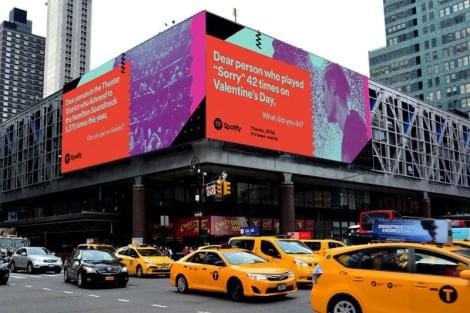
In the “attention economy” era, brands have to go above and beyond to make an impact on consumers. While advertising to the masses may seem to be the logical plan for leveraging brand awareness, it’s important to not forget about your local consumers either.
The Steady Rise Of Hyperlocal
Many brands have begun to realize the need to shift their marketing budgets and strategies towards focusing on the needs of individuals in particular locations and communities. Hyperlocal advertising aims to do just this by moving away from traditional mass-market adverts to highly specific, geographically restricted ads.
As marketers now have access to a wealth of data regarding the purchasing behaviours of consumers, brands are leveraging geo-location and contextual information to target consumers in the right place at the right time.
Through digital methods such as GPS tracking, brands are able to use location data to better understand a consumer’s mindset and to engage and reach them more effectively. By combining both digital advertising and OOH, hyperlocal advertising has become increasingly more popular as an omni-channel strategy.
OOH & Localized Advertising – Why It Works
Out-of-home advertising campaigns have always proven to catch the imagination of a consumer. And with consumers being 2.5 times more alert while they are out of the home, it is no wonder why OOH ads are so impactful when used in the context of localized advertising.
Many brands have turned to both OOH and digital OOH channels to target local communities as it has the ability to adapt to how consumers are living in, moving around and experiencing their particular city or town. Using locally relevant information such as a local event, traffic or weather can be extremely powerful in connecting with a community or neighbourhood. For example, as we have mentioned before in a previous article, McDonald’s used real-time weather data to create a branded localized experience in the UK for their Weather Reactive campaign.
Being able to offer consumers information that is relevant to their precise location, makes it easier for brands and businesses to leave consumers with a strong and positive brand experience.
Hyperlocal & Outdoor Media – In Use
Leveraging outdoor media such as billboards or digital screens along with location targeting can create an impactful and seamless storytelling experience for brands.
One such example of this is Spotify’s 2016 campaign Laugh Together which used location-based user data for various cities to create humorous and engaging advertisements to promote the streaming service. One of the taglines read “Dear person who played ‘Sorry’ 42 times on Valentine’s Day, what did you do?”
Spotify’s 2016 Laughing Together campaign used OOH & localized targeting
The UK based telecommunications company, O2 also combined hyperlocal advertising and outdoor media in their Decoded campaign. This campaign featured billboards in three separate locations. The interactive campaign displayed coded messages containing geographical locations which passersby would have to crack. If the consumer cracked the code and got to a particular location in time, they would win the company’s newest handset.
O2’s Decoded interactive campaign used hyper-local targeting to drive sales and brand awareness
Hyperlocal & OOH Ads: Putting The Focus On Local
It’s easy for a brand to get caught up in wanting to have a global campaign but often, the most effective campaigns are those that are local.
Out-of-home advertising has proven once again that not only has it the ability to capture the attention of the masses but also, those of local communities and towns. This makes it a powerful branding tool for hyperlocal advertising.




